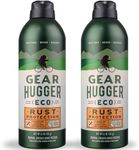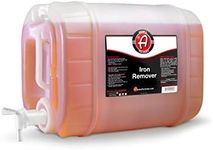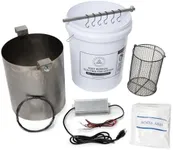Buying Guide for the Best Rust Prevention Sprays
When it comes to choosing the right rust-prevention spray, it's important to understand the key specifications and how they align with your specific needs. Rust-prevention sprays are essential for protecting metal surfaces from corrosion, which can extend the life of your tools, vehicles, and other metal items. By understanding the different features and specifications, you can make an informed decision and select the best product for your requirements.Type of Rust-Prevention SprayRust-prevention sprays come in various types, including penetrating oils, rust converters, and rust inhibitors. Penetrating oils are great for loosening rusted parts and providing short-term protection. Rust converters chemically transform rust into a stable compound, making them ideal for heavily rusted surfaces. Rust inhibitors form a protective barrier to prevent rust from forming, suitable for long-term protection. Choose the type based on whether you need to treat existing rust or prevent future rust.
Application MethodThe application method of rust-prevention sprays can vary, including aerosol sprays, liquid sprays, and brush-on formulas. Aerosol sprays are convenient and easy to apply, making them suitable for quick jobs and hard-to-reach areas. Liquid sprays can be used with a spray bottle or a cloth, offering more control over the application. Brush-on formulas are ideal for precise application on specific areas. Consider the ease of use and the area you need to cover when selecting the application method.
Drying TimeDrying time refers to how long it takes for the rust-prevention spray to dry and form a protective layer. Fast-drying sprays are useful for quick projects and when you need to handle the treated item soon after application. Slower-drying sprays may provide a thicker, more durable coating but require more time before the item can be used. Choose a drying time that fits your schedule and the urgency of your project.
DurabilityDurability indicates how long the rust-prevention spray will protect the metal surface before reapplication is needed. High-durability sprays offer long-lasting protection, making them ideal for items exposed to harsh conditions or infrequent maintenance. Lower-durability sprays may need more frequent reapplication but can be sufficient for items stored indoors or in less demanding environments. Consider the conditions your items will face and how often you are willing to reapply the spray.
Compatibility with MaterialsNot all rust-prevention sprays are suitable for all types of metals. Some sprays are designed specifically for ferrous metals (like iron and steel), while others can be used on non-ferrous metals (like aluminum and copper). Additionally, some sprays may be safe for use on painted surfaces, plastics, or rubber, while others may cause damage. Check the product label to ensure compatibility with the materials you need to protect.
Environmental ImpactThe environmental impact of rust-prevention sprays includes factors like the presence of volatile organic compounds (VOCs), biodegradability, and toxicity. Low-VOC and biodegradable sprays are more environmentally friendly and safer for use in enclosed spaces. Consider choosing a product with minimal environmental impact, especially if you are concerned about health and safety or if you will be using the spray in a poorly ventilated area.




















